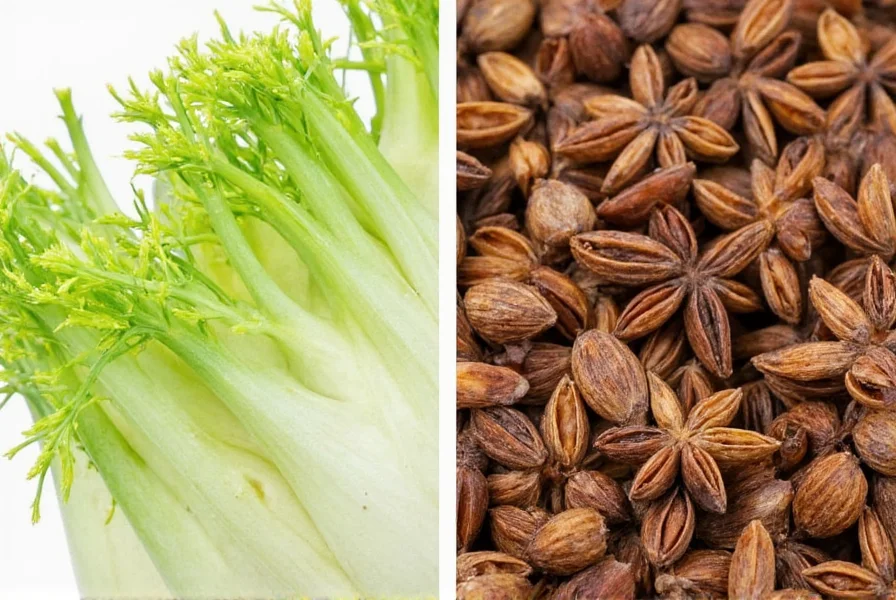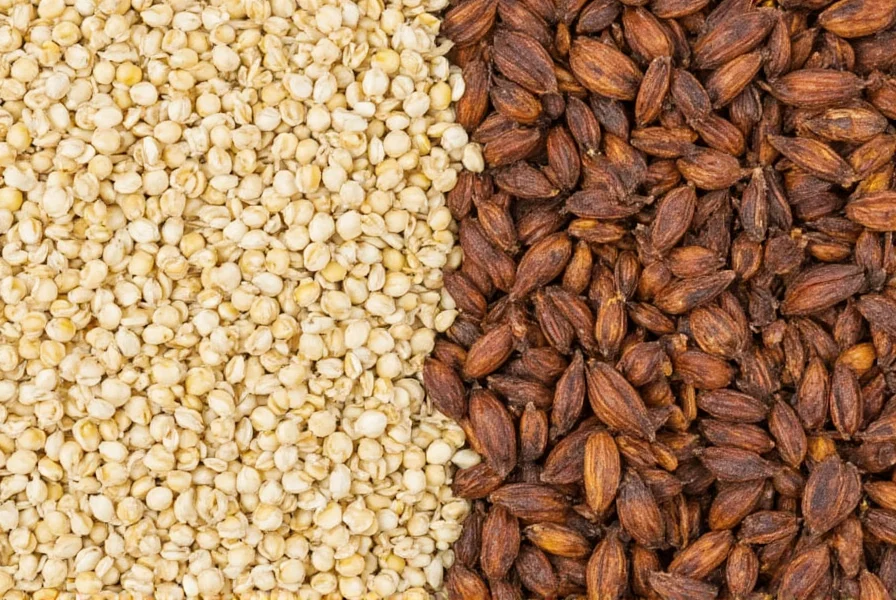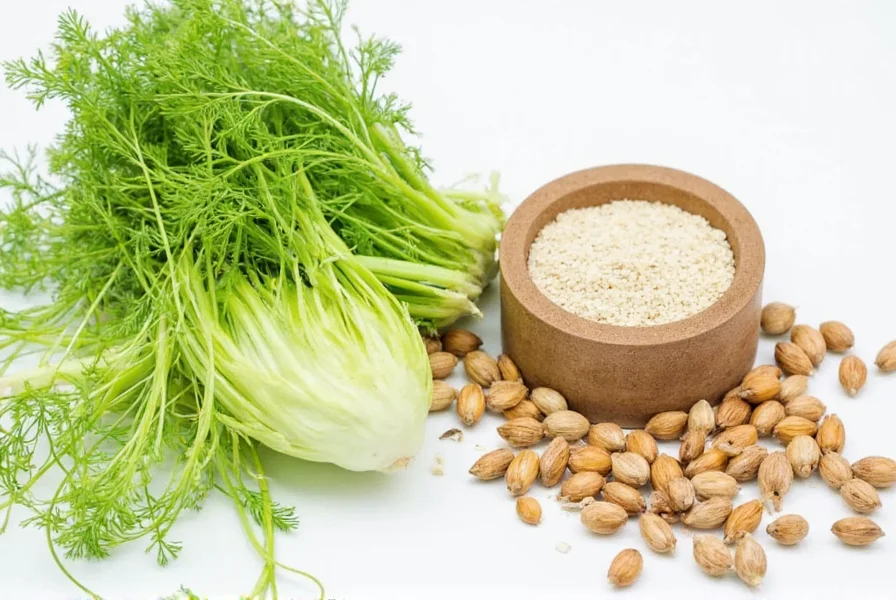Many home cooks and food enthusiasts confuse fennel and anise due to their similar licorice-like flavor profiles. Understanding the difference between fennel and anise is essential for proper culinary application and maximizing flavor in your dishes. Despite their shared aromatic compound anethole, these plants belong to different botanical families and offer unique characteristics that affect how they should be used in cooking.
Botanical Classification and Physical Characteristics
Fennel (Foeniculum vulgare) belongs to the Apiaceae family and grows as a perennial plant that can reach heights of 3-5 feet. It features a distinctive bulbous base, feathery fronds, and produces small yellow flowers. The entire plant is edible - from the crisp bulb to the delicate fronds and the tiny seeds.
Anise (Pimpinella anisum), also in the Apiaceae family but a different genus, is an annual plant growing to about 2 feet tall. Unlike fennel, anise doesn't produce an edible bulb. Instead, it's cultivated specifically for its small, grayish-brown seeds, which contain the highest concentration of flavor compounds.

Flavor Profile Comparison
While both plants share the characteristic licorice flavor due to anethole, there are subtle but important differences:
| Characteristic | Fennel | Anise |
|---|---|---|
| Primary Flavor Notes | Sweet, mild licorice with herbal, fresh notes | Stronger, more intense licorice with warm, spicy undertones |
| Flavor Intensity | Milder, especially in bulb form | More potent and concentrated |
| Heat Stability | Bulb flavor mellows when cooked; seeds retain flavor | Seeds maintain strong flavor through cooking |
| Aftertaste | Clean, refreshing finish | Warmer, longer-lasting finish |
Culinary Applications: When to Use Which
Understanding fennel bulb vs anise seeds is crucial for proper culinary application. The difference between fennel and anise becomes most apparent in how they're used in cooking:
Fennel applications:
- Bulb: Excellent raw in salads, roasted, grilled, or braised (common in Mediterranean cuisine)
- Fronds: Used as fresh herb garnish similar to dill
- Seeds: Used whole or ground in sausages, breads, and spice blends
Anise applications:
- Seeds: Primarily used ground in baking (biscotti, cookies), liqueurs (ouzo, absinthe), and spice blends
- Rarely used fresh as the plant doesn't produce edible bulb or substantial greens
Nutritional and Health Benefits
Both plants offer health benefits, though their nutritional profiles differ significantly due to their different edible parts:
Fennel bulb is low in calories (about 31 calories per 100g) and provides substantial fiber, vitamin C, potassium, and folate. The seeds contain higher concentrations of essential oils and minerals like iron and calcium.
Anise seeds are nutritionally dense, containing significant amounts of iron, manganese, calcium, and dietary fiber. They've been traditionally used to aid digestion and relieve respiratory issues, with some scientific studies supporting these traditional uses.
Substitution Guidelines: Can I Substitute Fennel for Anise?
While many wonder if they can substitute fennel for anise in recipes, the answer depends on which part you're substituting:
- Fennel seeds for anise seeds: Can be substituted at a 1:1 ratio, but expect a milder flavor. You may need to increase quantity slightly.
- Fennel bulb for anise: Not recommended as they serve completely different culinary functions.
- Anise seeds for fennel seeds: Use about 25% less anise as it's more potent.
Star anise (a completely different plant from Southeast Asia) is often confused with both. It has an even stronger licorice flavor and should be used sparingly in comparison to both fennel and anise seeds.
Selection and Storage Tips
When selecting fresh fennel, look for firm, white bulbs without brown spots, and bright green feathery fronds. Store in the refrigerator crisper drawer for up to 5 days. For longer storage, slice the bulb and freeze it.
Anise seeds should be purchased whole whenever possible and stored in an airtight container away from light and heat. Properly stored, they maintain their flavor for 1-2 years, though peak flavor is within the first 6 months.
Common Misconceptions Clarified
One of the most persistent misconceptions in the difference between fennel and anise is that they're the same plant. While related botanically (same family but different genera), they're distinct species with different growth habits and culinary applications.
Another common confusion involves star anise, which comes from a completely different plant family (Illicium verum) native to China and Vietnam. Star anise has a more intense flavor and star-shaped fruit pods.

Practical Guide for Home Cooks
Understanding how to tell fennel from anise will elevate your cooking:
- Use fresh fennel bulb when you want texture and mild flavor (salads, roasts)
- Reach for fennel seeds when you need a subtle licorice note in savory dishes
- Choose anise seeds when a pronounced licorice flavor is desired (baking, liqueurs)
- Toast both seeds lightly before use to enhance their natural oils and flavor
When following recipes that call for "anise," double-check whether they mean anise seeds or fennel, as this common confusion has ruined many dishes. European recipes often refer to fennel when they say "anise," while American recipes typically mean true anise seeds.











 浙公网安备
33010002000092号
浙公网安备
33010002000092号 浙B2-20120091-4
浙B2-20120091-4